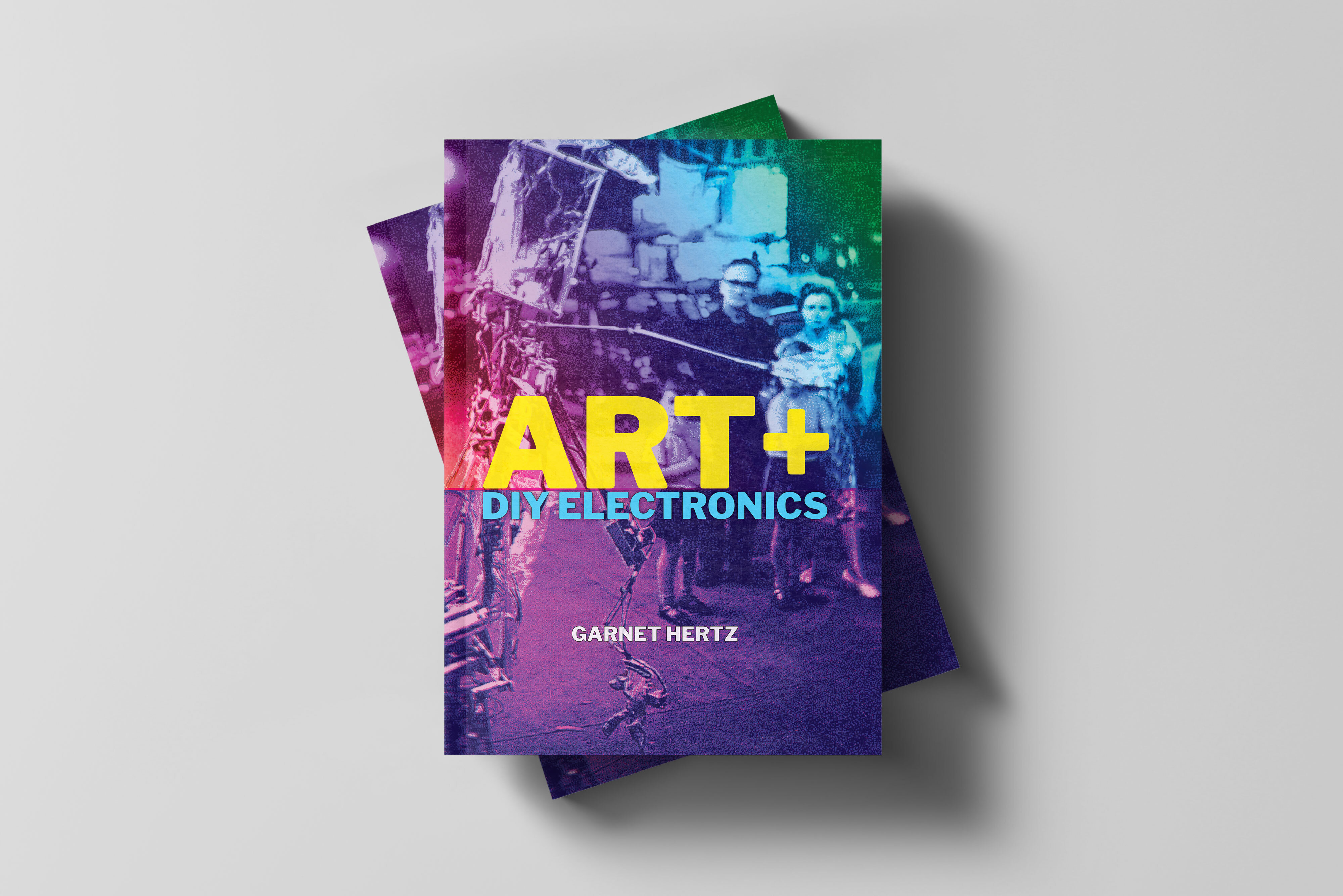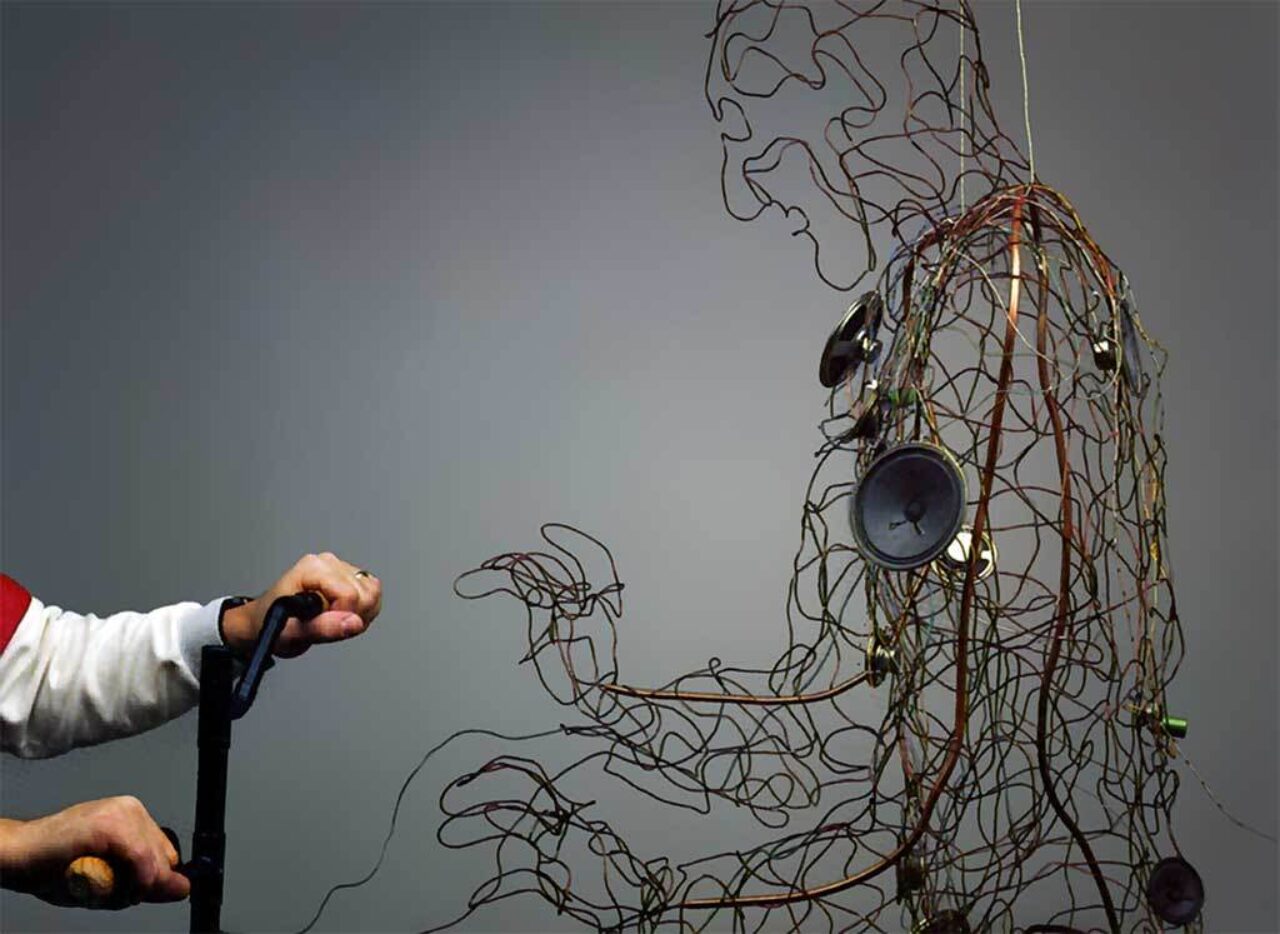Garnet Hertz’s New Book Uncovers Untold History of Art and DIY Electronics

Garnet Hertz's Art + DIY Electronics reveals the century-old history of what is now called the “maker movement.” (Image courtesy Garnet Hertz)
Posted on | Updated
The designer, educator and Canada Research Chair in Design and Media Arts reveals how artists regularly transform the technologies that mediate our everyday lives.
A new book from designer and ECU faculty member Garnet Hertz reveals the remarkable century-old history of what is now called the “maker movement.”
Art + DIY Electronics is the culmination of research conducted by Garnet over 16 years. For nine of those, Garnet has been ECU’s Canada Research Chair in Design and Media Arts. The book delves into the ways artists have transformed the devices we often take for granted in our daily lives.
“Hacking” electronic or digital machines is often branded “the maker movement.” But the practice has been going on nearly as long as electrical devices have existed. And artists have been some of the most radical innovators of all.
“Generally speaking, artists innovate in interesting ways that engineers typically don’t,” Garnet tells me from his research lab on ECU campus. “They’re much better at addressing political issues, protesting, innovating, stirring things up. And they figure out incredibly clever ways to use technology despite lacking resources.”
He cites the Barbie Liberation Organization (BLO) as an example. In 1993, Mattel released Teen Talk Barbie. The doll said things like, “Math class is tough.” A group of activists took exception to the vacuous stereotyping and sprung into action.
They swapped voice boxes from hundreds of the dolls with those removed from talking GI Joe figurines. Afterward, they returned both sets of toys to store shelves in custom packaging. Shoppers were shocked to hear their GI Joes murmur, “I love to shop with you.” Meanwhile, their Barbie Dolls croaked, “Vengeance is mine!”
Journalists caught wind and a media storm ensued. Garnet says this demonstrates how artists can use simple hacks to repurpose technology as social commentary.

Diana Burgoyne’s Wire Figures (1985). Audience members can grasp the handlebars (left) which trigger audio components in the electronic sculpture (right). From Garnet Hertz's Art + DIY Electronics. (Photo by Diana Burgoyne / courtesy Garnet Hertz)
“Artists sometimes underestimate their ability to innovate with technology by causing trouble,” he says. “Often, it’s easier for a single person to protest something than to build up an entire movement. Independent producers and DIY folks can create things that comment on issues in a very direct way.”
But the BLO were already the inheritors of a long history. Legendary artist Marcel Duchamp was working with modified machines in the 1910s. Duchamp embraced these hacked devices as “readymade” objects. And famed artist Nam June Paik used electronics even before his renowned video work. Both artists were disrupting the status quo with this work, Garnet says.
So much of DIY history is only now being told, he continues. But the little already on record nearly always focuses on men’s work. Garnet’s book aims partly to counter this trend by exploring women’s crucial contributions to the field of technology and art.
For example, Nancy Paterson was a Canadian artist who created one of the world’s first internet-controlled robots. Her 1998 project Stock Market Skirt physically represented online stock market data in a highly creative way. As stock prices increased, the dress went up. As they decreased, the hemline fell.
“In addition to being one of the world’s first internet telerobots, it’s also highly innovative,” Garnet says. “It was a tangible data visualization – one that cleverly mashes up finance, bodies, data and fashion.”

Darsha Hewitt performing 20 Oscillators in 20 Minutes at the Piksel 2012 Festival in Bergen, Norway. In the project, an audio circuit is assembled live in front of an audience. From Garnet Hertz's Art + DIY Electronics. (Photo by Sergey Dushkin / courtesy Garnet Hertz)
Like the Barbie Doll hack, this project shows how technology can be redirected for social, political and artistic ends. They also underscore the accessibility of DIY electronics. For Garnet, this may be the most important takeaway from his book.
“Artists should not be afraid to use technology,” he tells me. “They can own it and design it as much as an engineer can. There’s no reason why artists can’t innovate with technology. I want them to feel welcome in that space. Art ‘owns’ high tech as much as science does. And I hope the book will inspire people to build their own things after reading these examples.”
Visit Garnet’s website to learn more about his work. Art + DIY Electronics is published by MIT. Visit them online to read more about the book and order your copy.